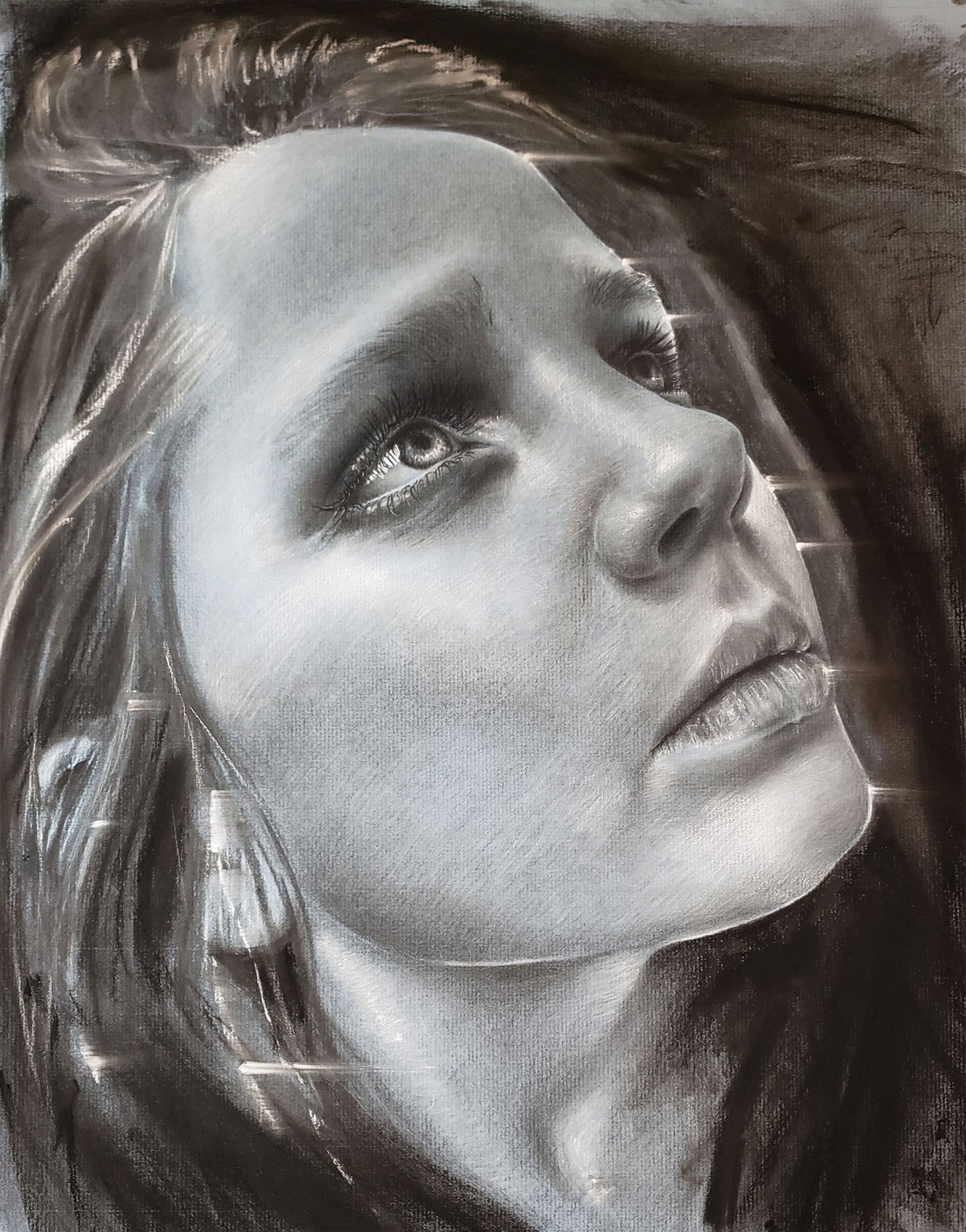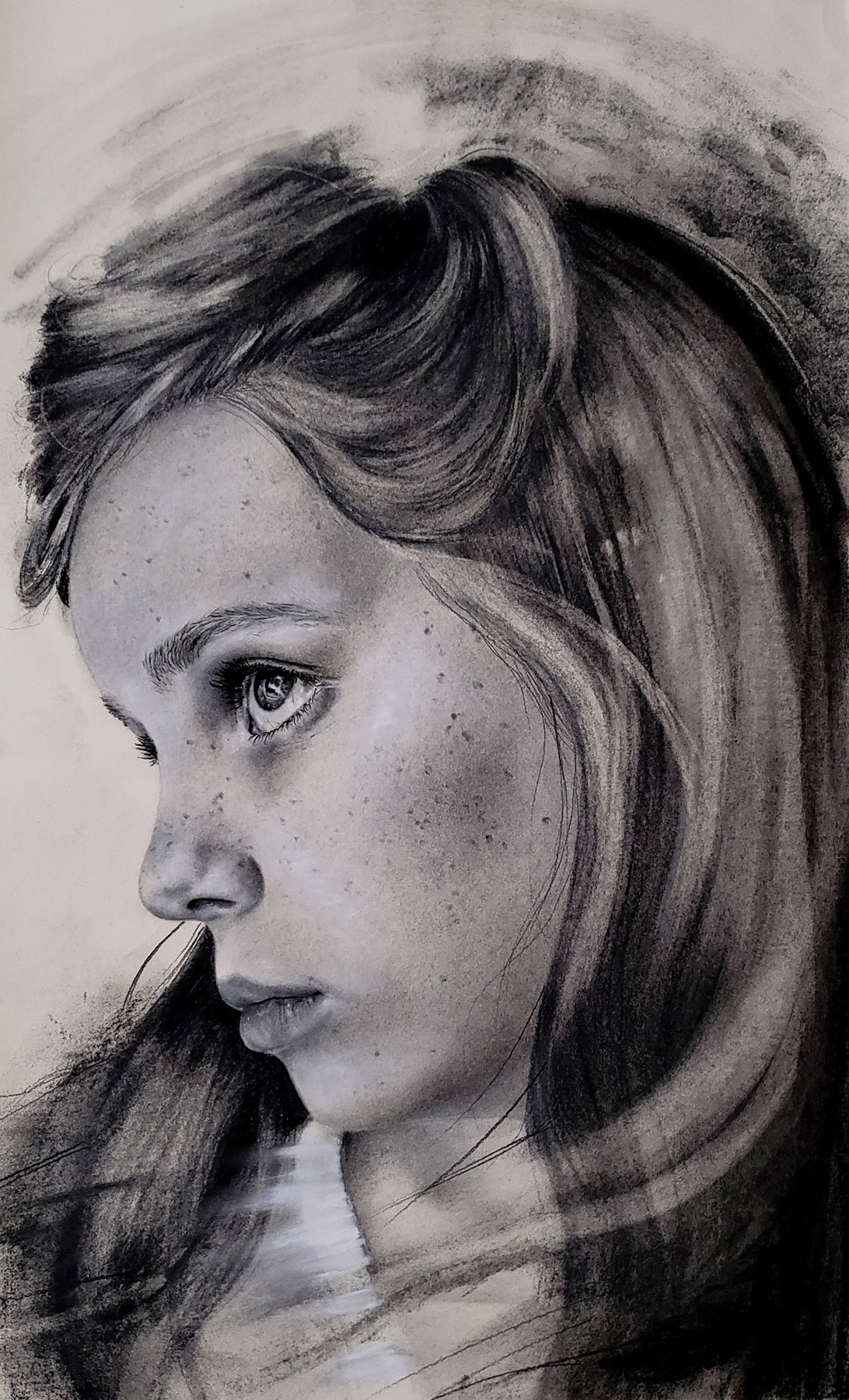Interview with artist Crystal Jennings
Crystal Jennings is an artist living and working in Pine Bluff. Her portraits, drawn in charcoal and graphite, are real and surreal, which adds to their beauty and mystery. They ask the viewer to explore a narrative that is both personal and universal. More of Crystal’s work can be found at M2 Gallery in Little Rock and Instagram.
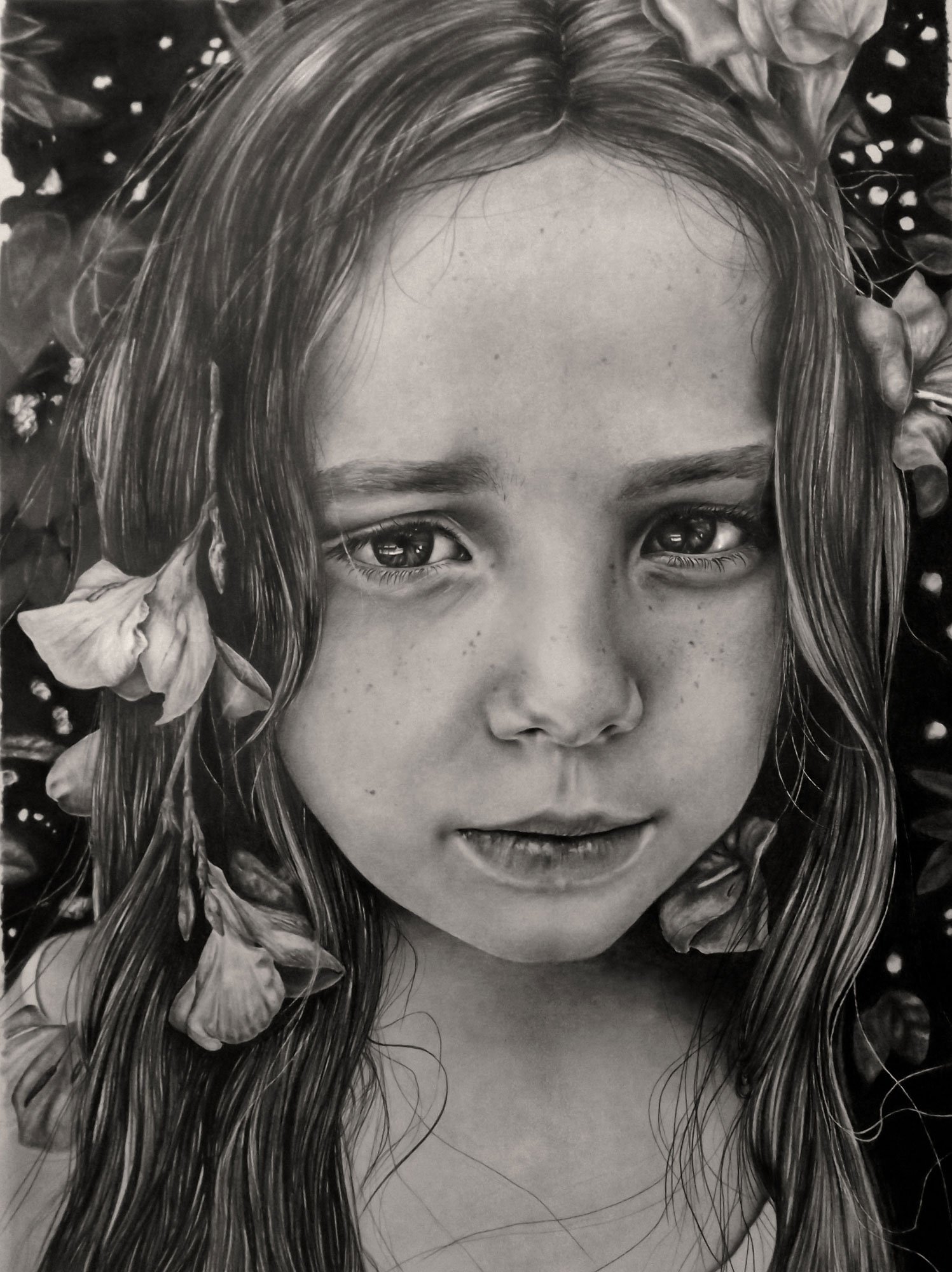
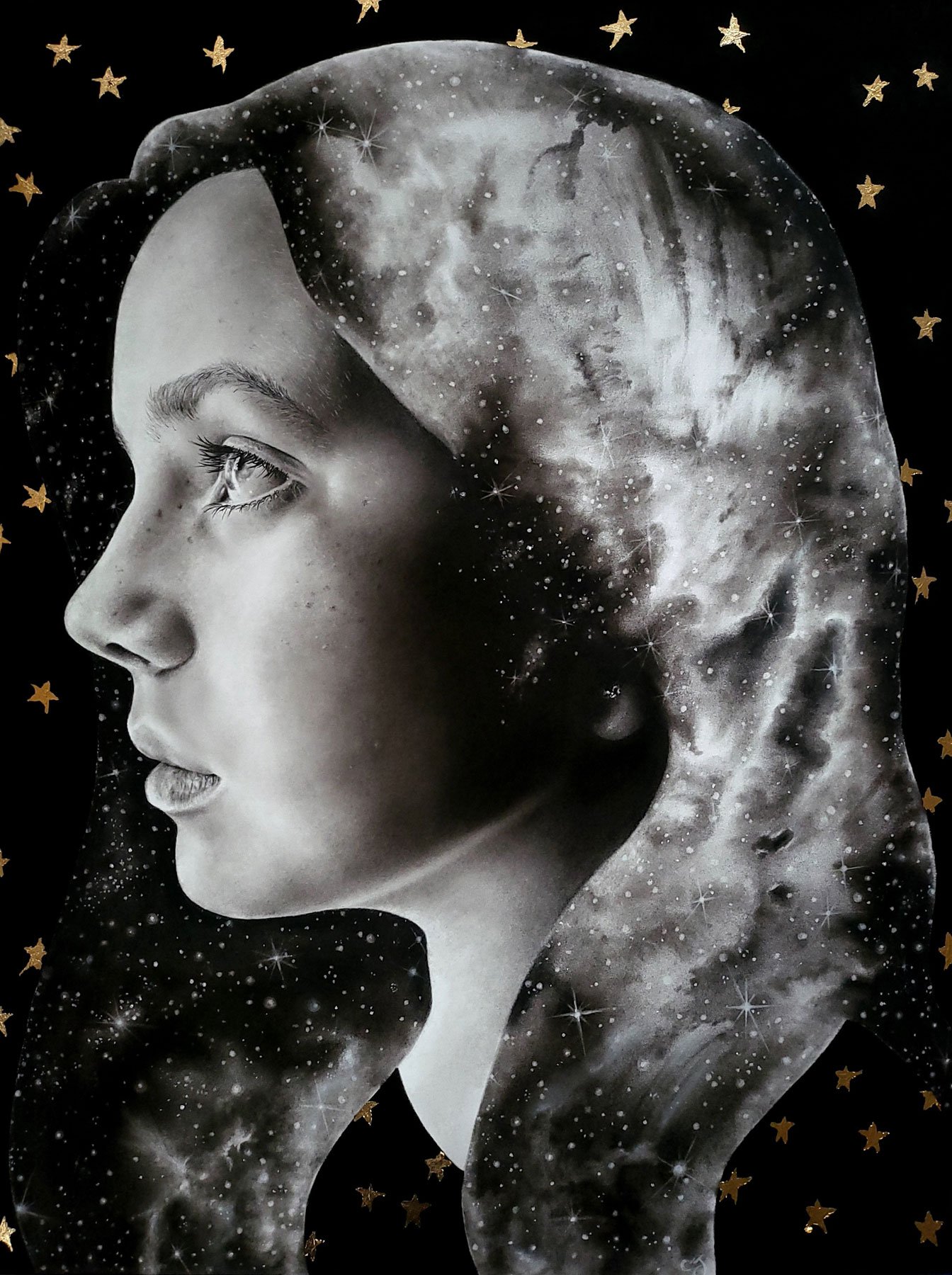
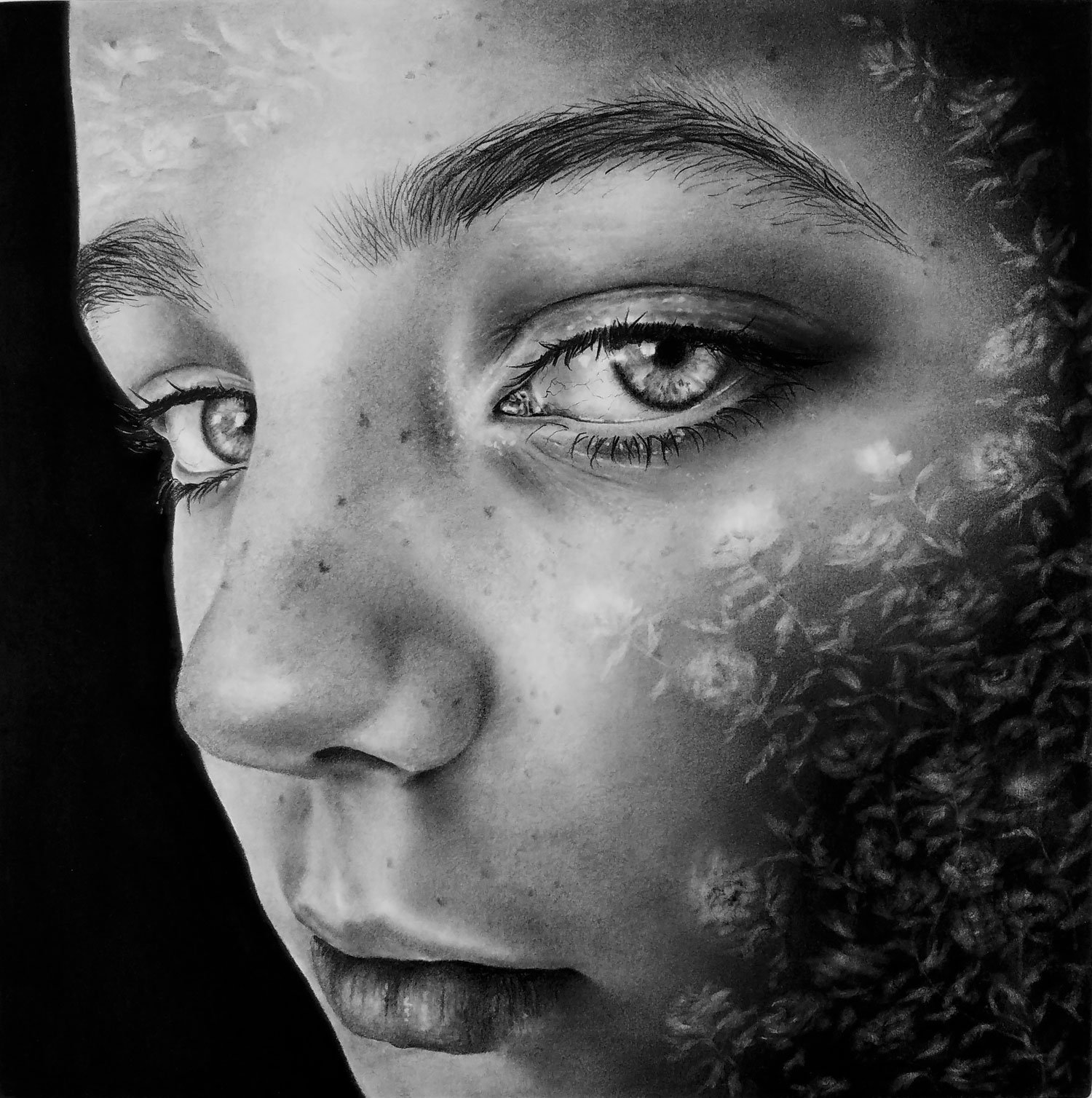
AAS: Crystal, was art a big part of your experiences growing up?
CJ: I was born in Pine Bluff, AR, but did most of my growing up in San Antonio and Chicago. San Antonio is full of bright, colorful, culturally influenced art and of course Chicago is home to one of the best art museums in the world, so I grew up appreciating all different kinds of art. I have always loved to draw. As a kid I liked to draw kid things like animals and dinosaurs and flowers and would always be doodling on something. When I was a teenager, I started drawing portraits from photos of celebrities in magazines, and that’s when I realized I could actually draw something very realistic. I never had formal art lessons as a child, but my parents always encouraged my creativity.
AAS: You describe yourself as mostly a self-taught artist, but you did graduate from Columbia College in Chicago with a BFA. How did that experience shape you as an artist?
CJ: It was fantastic going to art school in Chicago! I originally started off my higher education focusing on science, which I still love. I only took one year of classes, I wasn't really enjoying it and began to realize I needed to change my path. I decided on Graphic Design as it was the perfect melding together of computers and art. My concentration at Columbia College Chicago was on Art and Design, so while drawing and painting was part of the curriculum, most of my time was spent behind the computer learning design programs. One of the things that shaped me the most as an artist during school was being able to walk down the street and go to the Art Institute of Chicago. Not only did I have many assignments to study art at the museum, but I spent lots of afternoons just wandering the halls being immersed in the art. After I graduated, I spent some time as a professional graphic designer, then eventually formed my own wedding stationery design business. This was fulfilling to me because I was able to use my design background and my artistic creativity as I hand painted each piece of stationary. I was fortunate to be very busy, and I have done weddings all over the world. I met my husband in Chicago, and eventually convinced him to move down to Arkansas. About two years ago, after a decade of churning out wedding invitations I was ready to give it up and move on to something else. I quit my business to focus on homeschooling my daughters and working on my art.
AAS: Have you always used pencil and charcoal? What is it about grays that interests you the most?
CJ: I have dabbled in painting and spent a lot of time working in watercolor for my wedding business. In the past I worked in pastels, but nothing has ever been as satisfying as pencil and charcoal. As I have grown as an artist, I do not care to go back to painting or pastels. I love the look of dark charcoal and the high level of detail and realism that can be achieved with pencil. I try to put a high level of detail in my drawings to force the viewer to spend more time observing the artwork. I feel when you look at artwork in grays you are forced to spend a little more time searching for the story. Also, I get asked a lot - why don’t you paint…and the answer is because I don’t like to!
AAS: You are once again a part of the Small Works on Paper traveling exhibition put on by the Arkansas Arts Council. What has that experience been like and what kind of impact has that had on your career?
CJ: I absolutely love getting to share my artwork with others, so I’ve been thrilled to be included in SWOP. My work Lily was chosen for the 2021 exhibition. This year I have two pieces that were chosen for the 2022 exhibition, This is Not a Cloud and Apocalyptic Thinking. The exhibition travels to around 10 different galleries throughout the state, so it is very beneficial for the artists. Most of the artwork can be purchased and there is some publicity, so the show draws a lot of attention for the artists.
AAS: Let’s talk about some of your work. Apocalyptic Thinking is an amazing drawing with some important themes. Would you talk about that piece?
Apocalyptic Thinking, 24” x 18”, graphite and colored pencil on paper
CJ: This drawing was my favorite piece I completed last year. It’s part of a series of drawings involving what is real versus what is perceived to be real. The drawings are supposed to be a bit of fun and involve the use of color pencils, and I rarely incorporate color into my drawings.While Apocalyptic Thinking was super fun for me to draw, it does have some darker themes running through it. It represents the world falling down around us, horrible thoughts during the pandemic, rampant misinformation across social media, and more personal things going on in my family’s life at the time. You’ll notice my daughter in the drawing is wearing a breast cancer awareness bracelet - my mother was diagnosed with cancer during the pandemic and was undergoing really difficult chemo. Thankfully she is doing great now, but that was another layer of stressful thinking in an already incredibly stressful time. I think we’ve all had some apocalyptic thinking over the last two years!
AAS: Your work is so detailed and highly rendered but with a twist. What is your process? Pencil and charcoal are not very forgiving. How long does a typical piece take to complete?
CJ: I can see my drawings in my head before I start them, so I have a very specific idea of what I am trying to accomplish. I am not a sketcher. I go from a picture in my head to taking reference photographs, then creating the idea on paper. I can usually tell from the start whether or not something is going to work, so I don’t worry too much about mistakes. Some of my pieces are quite large, so sometimes I am working on a small piece and a large piece at the same time. I also may start a piece then need to set it aside for a while and work on something else. I am a homeschooling mom, so work time is ordinarily filled with many interruptions. Because of this, it is difficult to determine really how many hours go into one piece. A lot of them!
“Charcoal is my favorite medium because it's easy to portray a lot of emotion with its messiness and smudges, and white charcoal glows on the paper.”
AAS: Transparent is an extraordinary work and one of your large pieces. It is done in charcoal. Would you talk about that piece and your choice to use charcoal?
Transparent, 36” x 30”, charcoal on paper
CJ: Transparent is one of my favorite drawings I have ever done. It is more feelings about the pandemic put on paper – I guess just wanting it all to be over with. It was inspired by thoughts of masks and breathing but also a light at the end of the tunnel. I wanted it to be very dark and moody, so charcoal is my go to for moodiness. Charcoal is my favorite medium because it's easy to portray a lot of emotion with its messiness and smudges, and white charcoal glows on the paper. I plan on doing several more pieces like Transparent. It is rather abstract, and I feel a connection to it.
AAS: To me, surreal imagery is often a part of your drawings. Would you agree? I am thinking here of This is Not a Cloud and Perchance to Dream.
This is Not a Cloud, 24” x 18”, graphite and colored pencil on paper
CJ: Surrealism is definitely a huge part of my work – in school I was influenced by surrealist artists and while I don’t compare myself to them, I understand where they are coming from, so to speak. My goal is never to make a piece of art that looks like a photograph, so there is always a hint of surrealism or fantasy or abstraction. The title of my drawing This is Not a Cloud is a direct reference to Rene Magritte’s Treachery of Images (This is Not a Pipe). Most of my drawings that utilize surrealism use it in a more lighthearted way, but I think most would agree there’s not much logic left in the world, and life has never seemed more surreal. Perchance to Dream was a smaller test drawing to see if an idea for a larger drawing would work. I love moody, surreal, ethereal landscapes. I am very happy how Perchance to Dream turned out and am planning on exploring that more in the future on a larger scale. I enjoy getting lost in my drawings, and I hope that some of my imagery causes the viewer to do the same. I hope that when one looks at my drawings, they are forgetting everything else for a moment.
Perchance to Dream, 9” x 12”, graphite on paper
AAS: Waiting is another large piece. Would you talk about that piece and working on such a large scale?
Waiting, 42” x 36” charcoal on paper
CJ: I love to work big! I much prefer to work on large scale pieces. Working on a large drawing is challenging and there is a lot more physicality to it. I will go from sitting on the floor drawing to standing up drawing to walking away to check my work. Waiting is a portrait of my oldest daughter Lily. When I first started drawing Lily, she was a dramatic little girl, now she is almost a young woman and wanting to grow up too fast as most 11 year old’s do. So Waiting is about her….waiting. I have almost solely used Lily as a model for my drawings. Now I am lucky to be able to look back at my work and see how she has grown, and also how I have grown as an artist.
Strength of the Pack, 24” x 19”, graphite on paper
AAS: Strength of the Pack is a very powerful image of one of your daughters, I guess. What does she think of that portrait?
CJ: Strength of the Pack features my youngest daughter, Violet. She is our little wolf, our wild thing. Violet has a spirit all her own, and this drawing is about her fierceness and loyalty. Violet does not quite have the patience required to be my model yet, so sometimes she gets a little jealous of how often I use her big sister. Both of the girls like my drawings, but I’m not sure they think much of it yet since I’ve been drawing them since they were very young. They’re just used to it and sometimes get annoyed with me, Ha!
AAS: You recently earned the Best In Show at the Arts & Science Center for Southeast Arkansas exhibition where Bryan Massey Sr. was the juror. What is the art scene like in southeast Arkansas?
CJ: I am grateful to the Pine Bluff Art League for being able to connect with local artists. When I first moved back to Arkansas, the Art League was one of the only arts organizations I could find locally. Each year they have a members only juried exhibition at the Arts and Science Center, so it also provided an opportunity for me to start showing my art. This past year Mr. Massey’s selective choices curated a beautiful show, and I was honored to meet him and hear him speak about my artwork. The Arts and Science Center is a wonderful asset not only to Pine Bluff but all of Arkansas. I am always excited to have work hanging at ASC, and now they have a community gallery at the ARTSpace on Main, which features many talented local artists and provides them a space to sell their work.
AAS: Crystal, what is next for you? Where do you see your art practiced in the next 5 years?
CJ: Coming up March 6th, I will be participating in the 15th anniversary show at M2 Gallery in Little Rock. M2 is an amazing gallery, so I’m super excited about this. I will also be having a show there May 6th, which I am preparing for now. I am thrilled to be able to do this, I love drawing and I hope others can see that in my work. It is very easy for me to get lost in working and before I know it hours slip by, so I am very thankful to my husband and children for their patience and encouragement. I have a goal to build my own art studio, so in 5 years I hope to be in my studio working, covered in charcoal dust, already thinking about my next drawing…and maybe I will have acquired a few serious collectors along the way.
